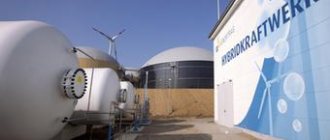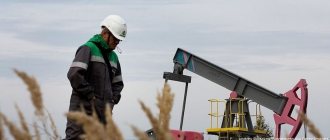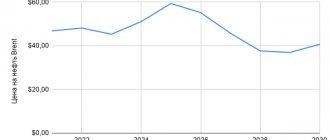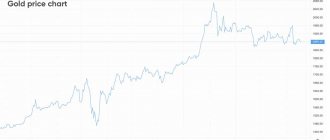The worsening forecast is largely due to a 2.2 million bpd drop in US production in February 2021, which was caused by severe frosts and snow storms. OPEC also lowered production forecasts in Norway and Canada due to the prolonged repair season.
The main drivers of growth in liquid hydrocarbon production in 2021 will be Canada, Brazil, China and Norway, while in the United States this figure will decrease by another 0.1 million bpd year-on-year.
At the same time, OPEC expects that global oil demand in 2021 will increase by 6 million barrels per day and amount to about 96.5 million b/d. Thus, OPEC maintained the forecast for growth in global oil demand presented in the April report.
OPEC noted that due to slower growth in oil demand in OECD countries in January-March, as well as an increase in the number of coronavirus infections in India and Brazil, the forecast for global demand growth in the first half of the year was reduced. However, positive data on fuel demand in the United States and the ongoing vaccination campaign against COVID-2019 will have a positive impact on global demand in the second half of the year, OPEC believes.
OPEC notes that investments in oil exploration and production in non-OPEC countries amounted to $311 billion in 2021, which is the minimum level in 15 years. And it is not expected to change much in 2021. For comparison: in 2014, investments in the development of oil projects reached $718 billion.
OECD oil reserves
Commercial oil reserves of the countries of the Organization for Economic Co-operation and Development (OECD) in March 2021 increased for the first time in eight months - by 10 million barrels, to 2.987 billion barrels. At this level, inventories were 13.5 million barrels higher than last year, the report said.
Compared to the average level over the past five years, the figure was 37.8 million barrels higher than normal, and relative to the 2015-2019 level - by 73 million barrels. According to the report, oil reserves in developed countries increased by 6.7 million barrels in March, and petroleum product reserves by 3.3 million barrels.
At current levels, oil reserves covered the needs of OECD countries for 67.4 days, which is almost 12 days less than a year earlier and 1.5 days higher than the five-year average.
At the same time, preliminary data on the level of reserves in the United States show that in April they decreased by 12.7 million barrels, to 1.280 billion barrels. At this level, they were 8.4% lower than a month earlier and 2.1% lower than the five-year average. In particular, oil inventories decreased by 13.2 million barrels, and petroleum product inventories increased by 0.5 million barrels.
What is this
OPEC is an international organization that unites countries that control a significant share of world exports and oil reserves , the purpose of which is to control production quotas in these countries.
OPEC stands for “Organization of Petroleum Exporting Countries” or in English – Organization of the Petroleum Exporting Countries (OPEC).
The countries that make up OPEC control about 2/3 of the world's oil reserves and about 35% of the world's crude oil production and 50% of its world exports .
Vienna deal plan
OPEC countries almost did not change the volume of oil production in April, keeping it at the level of 25.08 million barrels per day. At the same time, the terms of the deal to reduce oil production in April were fulfilled by 122% of the plan versus 124% a month earlier.
Thus, according to the report, in April the production of Saudi Arabia, the largest oil producer in OPEC, amounted to 8.13 million bpd (an increase of 34 thousand bpd compared to March).
The OPEC+ agreement to cut oil production involves 10 of the 13 OPEC members, as Iran, Libya and Venezuela are exempt from restrictions. In April, the production of the participants in the transaction amounted to only 21.115 million bpd against the stipulated 22.1 million bpd under the terms. In total, in April, the “ten” from OPEC were able to remove 5.57 million bpd from the market to the base level in the agreement instead of the required 4.56 million bpd. Thus, the terms of the deal were fulfilled by 122%. Without taking into account the Saudi million, the deal was also carried out quite well - 100%, TASS calculations show.
In April, oil production grew in Nigeria - by 75 thousand b/d, to 1.55 million b/d, and in Iran - by 73 thousand b/d, to 2.39 million b/d.
According to the March decision of OPEC+ ministers, most countries of the agreement maintained production levels in April, including a voluntary reduction in oil production by Saudi Arabia by 1 million bpd. Only Russia (by 130 thousand b/d) and Kazakhstan (by 20 thousand b/d) received the opportunity to increase it. Thus, the total reduction in production in April to the base level should have been 6.9 million bpd.
OPEC+ countries have completed a deal to reduce oil production by 114%
In April, OPEC+ member countries completed a deal to reduce oil production by 114% of the plan, including OPEC countries by 126%, states outside the association by 90%, and Russia by 91%. This is stated in the report of the International Energy Agency (IEA).
Mining business: why the terms of the OPEC+ deal remained unchanged
The cartel's decision will strengthen black gold prices at $62–68, experts say
The document notes that Saudi Arabia maintained “an additional voluntary reduction in oil production for the third month in a row in April, which ensured that OPEC+ generally complied with the terms of the deal to reduce production at the level of 114%.”
The IEA indicates that Russia increased production to the greatest extent of all countries participating in the deal for the second month. Production in the Russian Federation was at the level of 9.52 million barrels. per day, increased by 180 thousand barrels. per day in monthly terms and exceeded the target for April by 140 thousand barrels. per day. Thus, the execution of the transaction was 91%.
The April growth is explained by an increase in the combined production of Rosneft, Bashneft and Slavneft. Production of this resource and condensate in Russia fell by 870 thousand barrels in April. per day in annual terms - up to 10.8 million barrels. per day.
Oil and petroleum product inventories of Organization for Economic Co-operation and Development (OECD) countries fell by 25 million barrels in March. and now exceed the five-year average by only 1.7 million barrels.
The IEA has downgraded its forecast for global oil demand this year and now expects it to grow by 5.4 million barrels. per day, which is 270 thousand barrels. per day lower than in the organization’s previous report. In its April forecast, the agency predicted that demand would increase by 5.7 million barrels. per day, in March - by 5.5 million.
The deterioration of the forecast is due, among other things, to weaker-than-expected oil consumption in the US and Europe in the first quarter of 2021 and a deterioration in demand forecasts in India due to the recent surge in coronavirus.
The ministers of the OPEC+ countries agreed on April 1 to increase oil production volumes within three months. During the meeting, Russian Deputy Prime Minister Alexander Novak said that the deficit in the oil market had reached 2 million barrels. per day, stocks are decreasing. He predicted that this year demand for black gold will grow by 5-5.5 million barrels. per day.
Summing up the meeting of representatives of the alliance countries, Novak emphasized that Russia intends to restore the remaining volume of oil production within the framework of OPEC+ evenly over three months. According to him, OPEC+ states fulfilled the deal by 113% for the first time in February, which indicates a high level of fulfillment of their obligations by all countries.
The Deputy Prime Minister added that in Russia in May production will be increased by 250 thousand barrels. per day, in June - by 350 thousand barrels. per day. In July, the total increase in oil production of OPEC countries will amount to 441 thousand barrels. per day.
OPEC and Russia
The issue of interaction between OPEC and Russia is discussed separately. The parties understand that the key point is a stable energy market, but temporary cooperation is ineffective in promoting work to increase the predictability of prices for raw materials. Despite the independence of the Russian Federation from OPEC, the oil cartel has much in common with Russia.
When OPEC tried to increase the market price of oil in the 1990s, it became clear that as a result it would lose a significant part of the oil market, but no one could afford that. As a result of the next meeting of the “Board of Governors”, it was decided to involve independent manufacturers, including Russia, but the benefits of this appeared only in the 2000s after the “economic war”.
At the beginning, OPEC tried in the form of an ultimatum to force Russia to reduce the amount of oil produced and exported. Russia listened (in words) to the opinion of the organization and reduced export volumes, but in reality our country continued to increase the capacity of the extractive sector. After a series of subsequent conflicts and various events in the world such as the Iraqi crisis, a decision was made to cooperate.
Execution of agreement and compensation
According to the JMMC report, overall compliance with the OPEC+ agreement was 115% in March 2021.
The reduction in oil production above established quotas in March 2021 amounted to 1.23 million barrels per day. In this regard, the ministers of the OPEC+ countries expressed gratitude to the participating countries that ensured such a high level of implementation of the agreement. First of all, this concerns Saudi Arabia, which from February until the end of April 2021 voluntarily reduces its production by 1 million barrels per day above its quota. From May 2021, Saudi Arabia will begin to return voluntarily reduced volumes to the market, increasing production by 250, 350 and 400 thousand barrels per day of oil in May, June and July 2021, respectively. ONOMM also welcomed the smooth recovery of Saudi Arabia's oil production, noting the flexibility of the kingdom's policy given the prevailing uncertainty associated with the pace of recovery in oil demand. The issue of compensation for production in excess of quotas, which a number of participants in the agreement allowed in previous periods, was also again considered. During ONOMM, the extension of the period for compensation for excess production was confirmed until the end of September 2021. There was also another call for some participating countries to achieve full compliance with the terms of the OPEC+ agreement and make up for the previous insufficient production cuts, compensating for overproduction.
How OPEC+ came to be
OPEC+ is an expanded OPEC format formed in November 2021, which included 10 more countries led by Russia (14% of world oil production) for new opportunities to regulate the market.
Against the backdrop of dissatisfaction in many countries with the current price of oil, in November 2021 Russia proposed expanding the composition of participants and calling it OPEC+. This allowed Russia to make its proposals within the new format, which was previously impossible.
OPEC+ members began to control 55% of world oil supplies and 90% of proven reserves.
The organization was created - it included Russia, as well as a number of new countries interested in new opportunities for regulating this market. Biggest New Players:
- Russia
- Mexico
- Kazakhstan
The organization was able to impose production quotas on a much wider scale in the world, and, at that time, was able to oust shale oil producers.
Organization policy
Since its creation, OPEC has been working to improve the welfare of the countries participating in it. In fact, a community was created that made it possible to confront large players who previously represented real monopolies in the oil market. For unification, an opportunity has arisen to contrast the aggregate interests with the policies of competitors, to insist on the development of the market situation for the benefit of small countries.
Systematic work to expand influence allows us to achieve price stability.
The key directions of OPEC policy are:
- Increase in oil reference prices.
- Increase in tax rates on profits from oil production.
- Elimination of differences in reference prices of different countries created due to different locations of raw material sources.
In essence, all measures boiled down and continue to boil down to eliminating the monopoly on the part of large miners. The latter tried more than once to divide OPEC members and maintain their influence, but the emergence of a unified policy became a very overwhelming obstacle for them, and gradually they began to listen to the organization.
The only drawback of the community is the attempt to equalize working conditions in the oil market for all participants, regardless of personal contribution to the common cause. Sometimes the external political interests of these states are opposed, and compromises have to be sought within OPEC itself.
OPEC countries list for 2021
Today, there are a total of 13 member countries .
- Algeria
- Angola
- Venezuela
- Gabon
- Iran
- Iraq
- Congo
- Kuwait
- Libya
- United Arab Emirates (UAE)
- Nigeria
- Saudi Arabia
- Equatorial Guinea
Structure
The OPEC Statute distinguishes between founding members and full members—those countries whose applications for membership have been accepted.
The Statute provides that “any country having significant net exports of crude oil, which has interests fundamentally similar to those of the member countries, may become a full member of the Organization if it is admitted by a three-quarters majority of the full members, including the concurring votes of all members- founders."
The Statute further provides that associate members are those countries which are not entitled to full membership but are nevertheless admitted under such special conditions as may be prescribed by the Conference.
By the way, read this article too: Fractional composition of oil
History of OPEC formation
The Organization of the Petroleum Exporting Countries (OPEC) was founded in Baghdad, Iraq, with an agreement signed in September 1960 by five countries:
- Islamic Republic of Iran,
- Iraq,
- Kuwait,
- Saudi Arabia
- Venezuela.
They were to become founding members of the Organization.
Later these countries were joined
- Qatar (1961),
- Indonesia (1962),
- Libya (1962),
- United Arab Emirates (1967),
- Algeria (1969),
- Nigeria (1971),
- Ecuador (1973),
- Gabon (1975),
- Angola (2007),
- Equatorial Guinea (2017)
- Congo (2018).
Changes
Ecuador suspended its membership in December 1992, rejoined OPEC in October 2007, but decided to leave OPEC on January 1, 2021.
Indonesia suspended its membership in January 2009, reactivated it in January 2021, but decided to suspend its membership again at the 171st meeting of the OPEC conference on November 30, 2021.
Gabon ceased its membership in January 1995. However, in July 2016, she rejoined the Organization.
Qatar terminated its membership on January 1, 2021.
Oil basket
The quality of oil supplied by OPEC countries is worse compared to the benchmark grades WTI or even Brent. Therefore, the price of OPEC oil is lower.
OPEC countries and types of oil supplied
Quotas and oil production
Organization structure
OPEC meetings
The highest governing body of the Organization of Petroleum Exporting Countries is the Conference of Participating Countries, or as it is more often called, the OPEC meeting or meeting.
OPEC meets twice a year, and if necessary, extraordinary sessions are organized. The meeting place, in most cases, is the headquarters of the organization, which has been located in Vienna since 1965. From each country, a delegation is present at the meeting, headed, as a rule, by the ministers of oil or energy of the corresponding country.
President of the Conference
The meetings are presided over by the President of the Conference (OPEC President), who is elected every year. Since 1978, the position of deputy president has also been introduced.
Board of Governors
Each member country of the organization appoints a special representative, from whom the Board of Governors is formed. The composition of the council is approved at an OPEC meeting, as is its chairman, who is elected for a term of three years. The functions of the council are to manage the organization, convene Conferences and draw up the annual budget.
Secretariat
The executive body of the Organization of Petroleum Exporting Countries is the Secretariat, headed by the Secretary General. The Secretariat is responsible for the implementation of all resolutions adopted by the Conference and the Governing Council. In addition, this body conducts research, the results of which are key factors in the decision-making process.
The OPEC Secretariat includes the Office of the Secretary General, the Legal Division, the Research Division and the Support Services Division.
OPEC quotas
One of the main instruments of OPEC influence on the oil market is the assignment of production quotas. Based on the results of a general decision, volumes are usually published (separately for each country), as a result, all parties have the opportunity to realize their own interests without violating the rights of other states.
When discussing the next change in quotas/maintaining previous volumes, take into account:
- Production capacity.
- Historical production volumes.
- Domestic oil consumption.
- Production costs.
- Population.
- Dependence on the export of petroleum raw materials.
- Availability and size of external debt.
OPEC does not publish complete data on assigned quotas. The distribution of shares in the world market can be judged mainly from reports announced at the end of each calendar year. Due to systematic changes in the composition of the organization, some of the data is not considered as an objective indicator.
What is the OPEC Basket
Since 1987, the concept of the OPEC Reference Basket appeared. Its value is equal to the weighted average price of the main types of oil produced within the “participating countries” (one from each representative). The composition of the basket changes systematically according to changes in the list of participants and changes in trends in the global market.
The latest arithmetic average of the basket was calculated from the oil grades of the following countries:
- Algeria - Saharan Blend variety.
- Angola - Girassol.
- Ecuador - Oriente.
- Iran - Iran Heavy.
- Iraq - Basra Light.
- Kuwait - Kuwait Export.
- Libya - Es Sider.
- Nigeria - Bonny Light.
- Qatar - Qatar Marine.
- Saudi Arabia - Arab Light.
- UAE - Murban.
- Venezuela - Merey.
The historical maximum value of the OPEC basket was recorded in 2008. The price mark of $140.73 per barrel of oil was reached on July 3, 2021, but the price subsequently fell. As of January 2017, it was only $52.91 per barrel. Recalculation is carried out daily at the end of the next trading day on the exchange.
When assessing the basket, global oil reserves, declines in individual countries' reserves, and changes in production methods are taken into account. But the forecasts still remain the same - the level of $60 per barrel in a five-year perspective. Any political, economic or natural phenomenon can dramatically change the situation. If the same trends continue, the forecast will remain the same.











